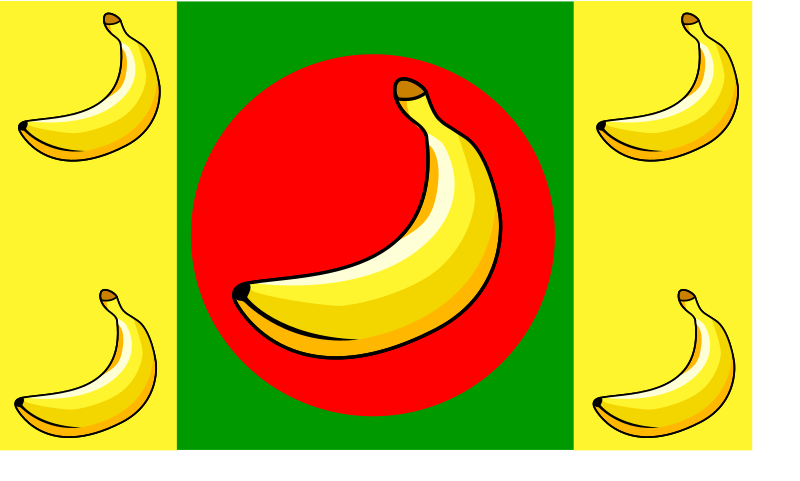
A recent episode of Fresh Air talked with Dan Koeppel, author of Banana: The Fate of the Fruit That Changed the World. There's a pretty long discussion of Standard Fruit and United Fruit companies' meddling and aggression in central american countries, including Honduras. Check out the episode here.
Monday, February 25, 2008
I live in a former Banana Republic
Posted by
Raphael
at
6:27 PM
0
comments
![]()
Monday, February 18, 2008
One Year Ago Today...
...I arrived in Honduras. I left San Francisco over a year ago, on February 11th. We were supposed to arrive in Honduras on the 14th, but the weather had other ideas. What can I say? Time has flown since then, so it must mean I'm having fun, right?
I am. I'm glad I decided to do the Peace Corps, glad I'm in the health project, glad I was sent to Trujillo. There are definitely frustrating days (I had a doozy of one last week) but all in all it's been a great experience and I think it will continue to be so.
One thing I'd like to say is thanks to all the friends and family who have stayed in touch with letters, phone calls, emails, carrier pigeons, etc... Your support means a lot to me and this would have been a lot harder without it.
Posted by
Raphael
at
8:37 AM
1 comments
![]()
Sunday, February 17, 2008
The Pizza Lesson
A lesser part of the report is for reporting so-called "Secondary Projects." This is work that doesn't correspond to one of the stated goals, but that has contributed to the development of your community anyway. For example, the english classes I taught last summer qualified as a Secondary Project.
My sitemate Brent (a Business volunteer nearing the end of his service) recently gave me the opportunity to do a really fun secondary project. A friend of his, Elsa, recently rented out a little shack with a gorgeous view of the bay and started up a small eatery. Brent was working with her to improve the menu and suggested pizza. Currently there is only one place in Trujillo to get pizza, and it is both bad and overpriced.
Elsa said she didn't know how to make pizza, so Brent said that he had a friend who made pizza and could teach her. That friend? Me. Last Wednesday, we showed up at her restaurant at mid-morning and I taught her to make pizza. I was completely hands-off, just giving her directions and feedback. She made three small vegetarian pizzas, which were delicious! Tomorrow, Elsa is debuting pizza as an item for sale at her eatery. I can't wait to go over there and get a hot slice!
Posted by
Raphael
at
8:38 AM
0
comments
![]()
Saturday, February 16, 2008
Calentura

Today my alarm went off at 5:30am. I got dressed, had a breakfast of oatmeal and coffee, loaded some food and 2 liters of water into my day pack, and left a little before 6:30. I met up with Brent, Alan, Alan's wife Amanda, Jacob, and Cara. Amanda, Jacob and Cara are med students from Indiana doing a several week study abroad program through their school. Today we were hiking to the top of the highest mountain in the Trujillo area, Calentura (1325m).
When we set off (around 7:15am due to some oversleepers) the top of Calentura was cloaked in dense gray clouds. But we were hopeful that by the time we arrived at the top, the sun would have burned off the clouds and we would have a magnificent view of the coastline, from Punta Betulia to Laguna Guaimoreto and out past Punta Caxinas to the Bay Islands.
The only path up Calentura is a dirt road originally built by the U.S. military for a radar station during the 1980s. The U.S. station hasn't been used since the early 90s, but it's been replaced by radio towers and a cell phone tower owned by different companies operating in Honduras. With businesses needing access to to maintain their equipment, the road is kept in passable condition (though passable in Honduras means you need a strong 4x4 to make the trip).
As we climbed, the temperature dropped and the fog thickened. Several times it poured on us and we huddled under the nearest giant fern until the rain passed. The giant fern itself was also a sign that we were getting higher up. The vegetation went through a couple distinct changes as we climbed, from the coastal tropical vegetation of palms, banana trees and their relatives to the tall trees, vines and giant ferns of low mountain rain forest (if there are any forest ecologists out there, perhaps you can help me better explain this).
The climb was pretty unrelenting, and since we started at more or less sea level we climbed the entire 1,325 meters. Brent, Jacob, Cara and I reached the top at 10:30am. We were glad to have reached the top, but disappointed because we couldn't see anything! The fog was as thick as pea soup. It was also cold and very windy. We were very underdressed in shorts and t-shirts. As we waited for Alan and Amanda it began to pour and the temperature dropped further. Finally at 11:30am, teeth chattering and covered with goosebumps, we decided to head back down. We bumped into Alan and Amanda who continued on to the top. Shortly after passing them, around noon, the fog started to lift. The sun came out. Jacob and Cara headed back up with my camera. But Brent and I were too hungry to wait any longer, and walked on down.
The moral of the story is bring layers when hiking in to a cloud forest, and wait until the afternoon to see if the fog will lift! I plan on making the climb again in a couple months, and hopefully can get some more pictures.
Posted by
Raphael
at
4:09 PM
0
comments
![]()





